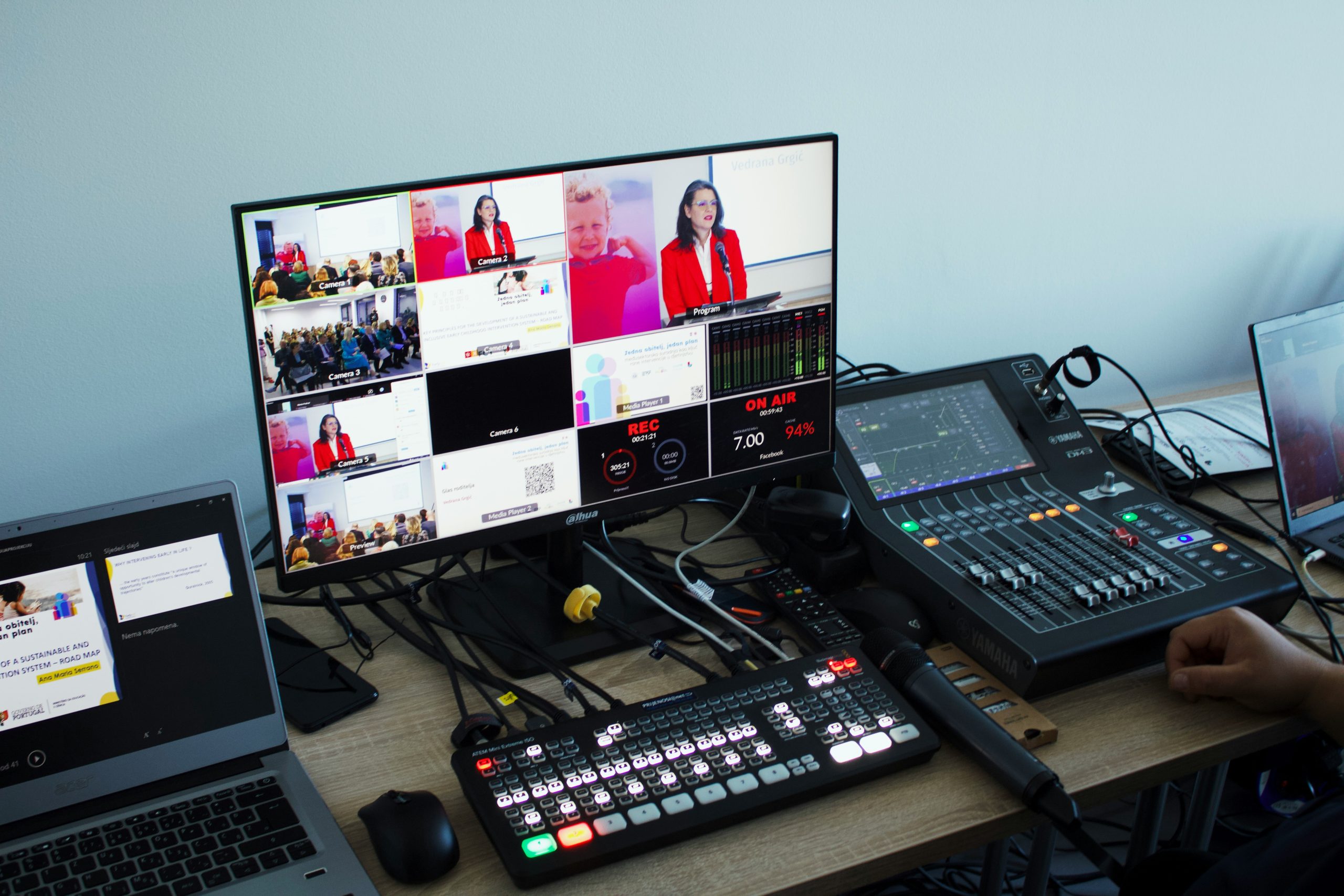In an age where streaming content has become as ubiquitous as the air we breathe, embarking on a self-hosted journey with Owncast can feel both liberating and daunting. Imagine, however, tuning in to your own live broadcast only to be met with a frustrating authentication error—suddenly, that sense of freedom is swept away by confusion and technical roadblocks. Whether you’re a seasoned tech enthusiast or just dipping your toes into the world of self-hosting, encountering authentication issues can disrupt your creative flow and leave you questioning your setup.
Fear not! In this article, we will guide you through some of the most common authentication hiccups faced by Owncast users. From misconfigured settings to overlooked security features, we’ll unravel the mysteries behind these obstacles and provide actionable solutions to help you get back on track. So grab your virtual toolkit as we delve into troubleshooting tips that will empower you to take control of your streaming experience once more—because every great story deserves its stage!
What is Owncast Authentication?
Owncast Authentication serves as a vital layer of security that ensures only authorized users can access and manage your Owncast instance. By employing various authentication methods—ranging from basic username-password combinations to more sophisticated token-based systems—it allows content creators to safeguard their streaming environments against unauthorized access. The elegance of Owncast Authentication lies not just in protecting sensitive data, but also in providing peace of mind, enabling creators to focus on delivering quality content without the fear of intrusions.
However, like any system, issues can arise that disrupt seamless usage. Factors such as misconfigurations or expired tokens often present challenges for both newcomers and seasoned streamers alike. Advanced troubleshooting techniques can shed light on these problems; for example, checking server logs may reveal hidden clues about failed login attempts or permission errors. Understanding the intricacies of Owncast Authentication not only helps in rectifying these issues but also enhances the overall user experience by creating a more reliable platform for engaging communities through live streaming.

Common Authentication Issues Overview
Authentication issues can often lead to frustrating roadblocks for users trying to access Owncast. One prevalent problem arises from incorrect configurations in OAuth providers or improper API key usage. Even minor typographical errors in the credentials can result in authentication failures, causing unnecessary downtime for users. Moreover, mismanaged secrets, such as outdated tokens or expired sessions, can inadvertently lock out legitimate users and generate a false sense of security.
Another common pitfall lies in the duality of user roles and permissions within the application. Users might find themselves confused if role-based access controls are not clearly defined or communicated. This complexity may lead to situations where even authenticated users can’t access certain features of Owncast due to insufficient permissions. Therefore, regularly auditing both user roles and their corresponding access rights is crucial in eliminating these confusion-induced barriers and ensuring a seamless experience for all users.
Incorrect Credentials and Login Failures
Incorrect credentials can be one of the most frustrating obstacles when accessing your Owncast server. Often, users may overlook simple typographical errors in their usernames or passwords—characters that might seem trivial can lead to login failures. It’s important to double-check for case sensitivity as well, since many systems recognize ‘Password’ and ‘password’ as completely different entries. Sometimes, lingering autofill settings in browsers can introduce old or outdated credentials into the mix, creating further confusion.
Another critical aspect to consider is how specific browser extensions or security applications could interfere with authentication processes by blocking certain cookies or scripts necessary for a successful login. If you’re consistently facing errors despite entering the correct information, try clearing your cache and disabling any unnecessary plugins temporarily to identify if they are causing conflicts. Additionally, enabling two-factor authentication not only bolsters security but also serves as a useful way of confirming account access without relying solely on memory—transforming a potential frustration into an additional layer of protection against unauthorized entry.

Two-Factor Authentication Troubleshooting Tips
When encountering issues with Two-Factor Authentication (2FA), the first step is often to re-evaluate the authentication method being utilized. Ensure that your primary device, such as a smartphone or security key, is functioning correctly and is fully updated. Sometimes, connectivity issues can disrupt the delivery of verification codes; checking your internet connection or switching from Wi-Fi to mobile data can make a significant difference. If you’re using an authenticator app, remember that the time settings on both your device and the authenticator must be synced. A simple reset of date and time can resolve this discrepancy.
Another common issue arises when users fail to consider backup options. Many platforms allow you to generate backup codes during setup—keeping these in a safe place ensures you won’t be left locked out should your primary method fail. Additionally, if you’re consistently struggling with verification delays or failures via SMS, consider switching to an authenticator app for greater reliability. Finally, always check platform-specific forums or support pages for updates regarding known issues; community insights often lead to quicker resolutions than generic troubleshooting steps alone. Understanding these nuances not only streamlines access but fortifies your overall security posture against potential vulnerabilities.
Session Timeouts and Connection Problems
Session timeouts and connection problems can often be the unseen culprits behind frustrating authentication failures in Owncast. When a user is active but suddenly finds themselves logged out, it’s typically due to session expiration, a security feature designed to protect user accounts from unauthorized access. However, for many, this precaution feels more like an inconvenience than a safeguard. A proactive approach to managing session durations can greatly enhance user experience—consider customizing these settings based on typical usage patterns within your community.
Connection problems further exacerbate these timeout issues; intermittent network disruptions mean that authenticated sessions may appear stable until they drop unexpectedly. In such cases, understanding how session persistence works becomes crucial for troubleshooting. Encouraging users to refresh their connections regularly or providing guidance on recognizing when their session has stalled can go a long way in minimizing authentication errors. Additionally, leveraging tools like web sockets could help maintain a constant link with the server, keeping users informed rather than left in the dark during connection fluctuations.

Resolving API Key Misconfigurations
One of the most common pitfalls when working with Owncast lies in API key misconfigurations. These errors can stem from incorrectly set environment variables, typographical mistakes during key entry, or even outdated credentials that have not been refreshed in accordance with recent security protocols. Even the tiniest oversight can lead to failed authentication attempts and cripple access to your streaming platform. To address this, ensure you’re using a dedicated environment for managing keys and employ automated scripts to check for discrepancies or expiration dates regularly.
Furthermore, consider implementing robust logging mechanisms that track API usage by each key. This not only helps identify which keys are functionally active but also flags any anomalies in usage patterns that may warrant further investigation. Integrating real-time alerts can notify you instantly of issues stemming from misconfigurations before they escalate into broader accessibility concerns. By adopting these proactive measures, you create a firewall against potential disruptions and enhance overall system reliability while fostering user trust in your platform’s security infrastructure.
Conclusion: Ensuring Smooth Owncast Experience
To ensure a smooth Owncast experience, it’s essential to adopt proactive strategies that extend beyond mere troubleshooting. Regularly updating your Owncast instance not only patches security vulnerabilities but also introduces optimizations and new features that enhance user engagement and overall performance. Consider engaging with the vibrant community surrounding Owncast; forums and social media are treasure troves of collective knowledge where users share their hacks, tips, and best practices. By tapping into this network, you can gain insights that may preemptively address authentication issues before they escalate.
Another key factor is user education; providing clear guidelines on account creation, password management, and multi-factor authentication helps demystify the process for newcomers while bolstering overall security. Encouraging feedback from users about their authentication experiences can illuminate pain points you might overlook—turning these moments of tension into opportunities for improvement. Ultimately, fostering an environment where both administrators and viewers feel informed and engaged cultivates a seamless streaming experience that encourages return visitors to your platform time after time.


